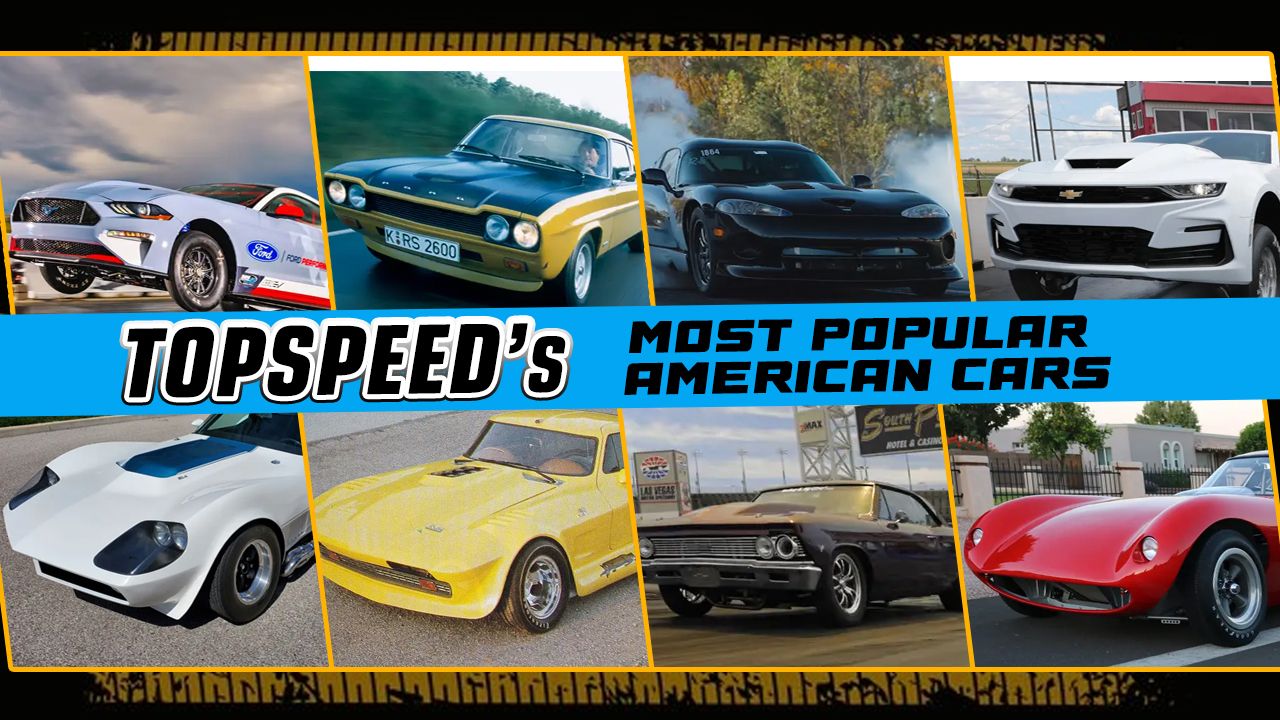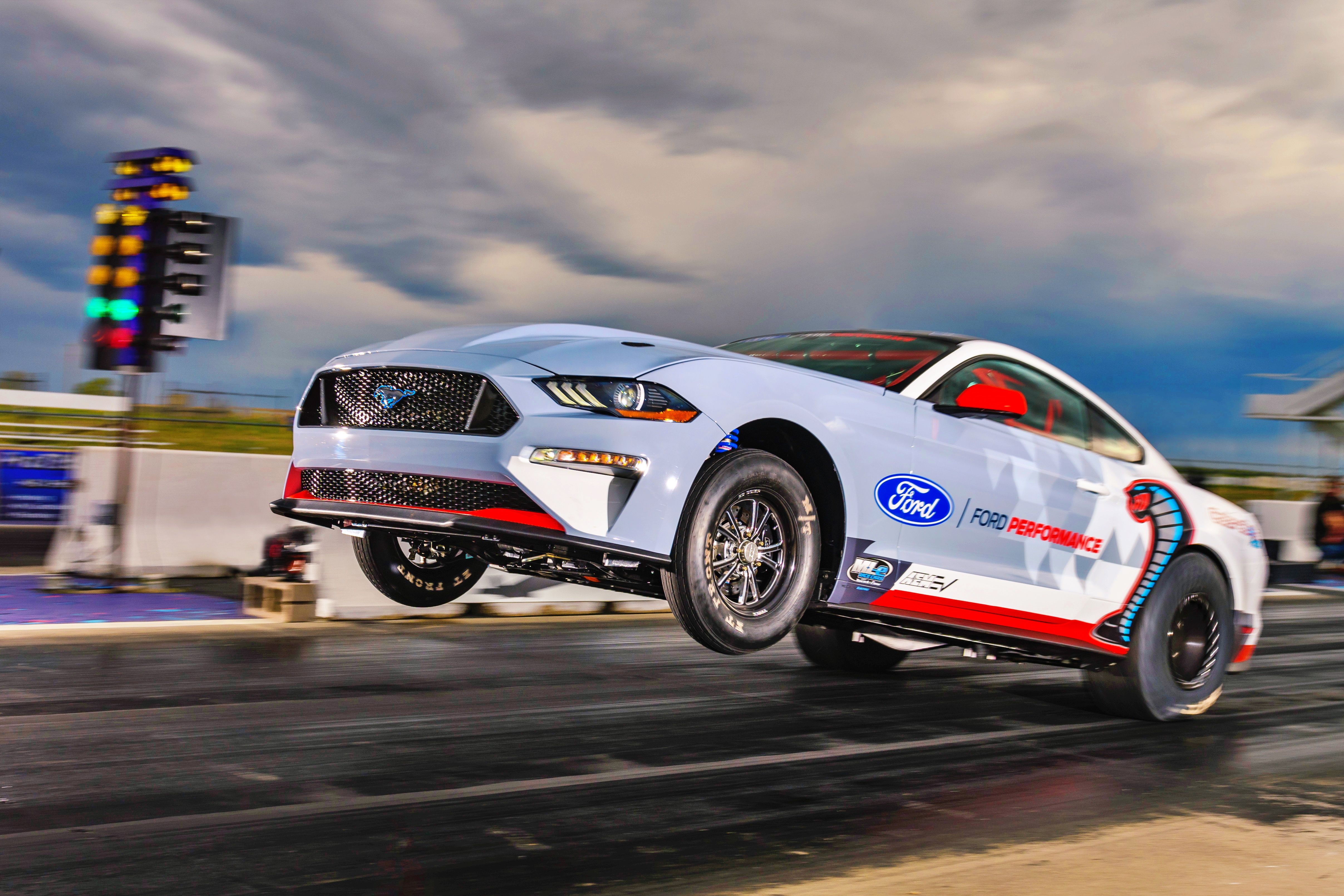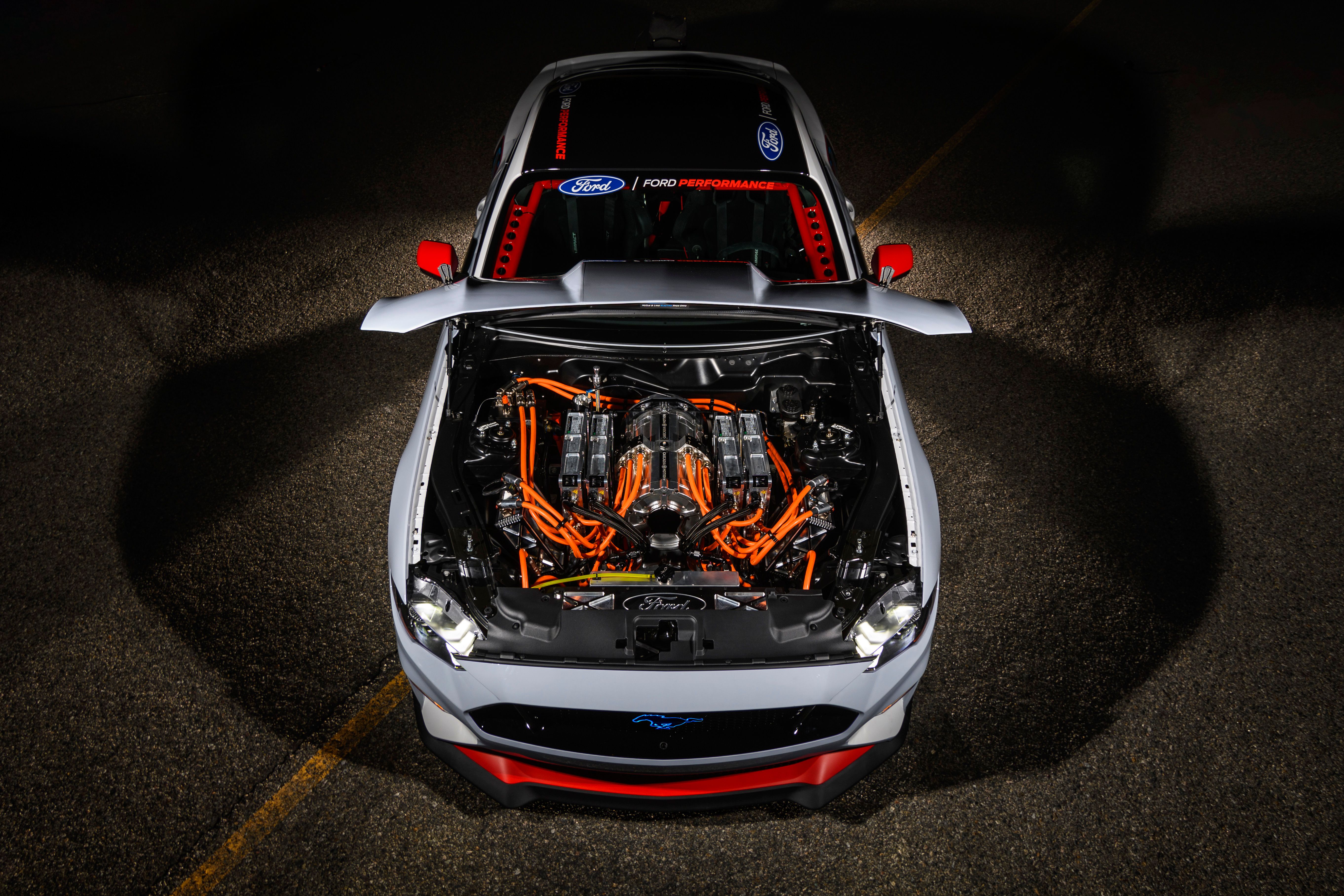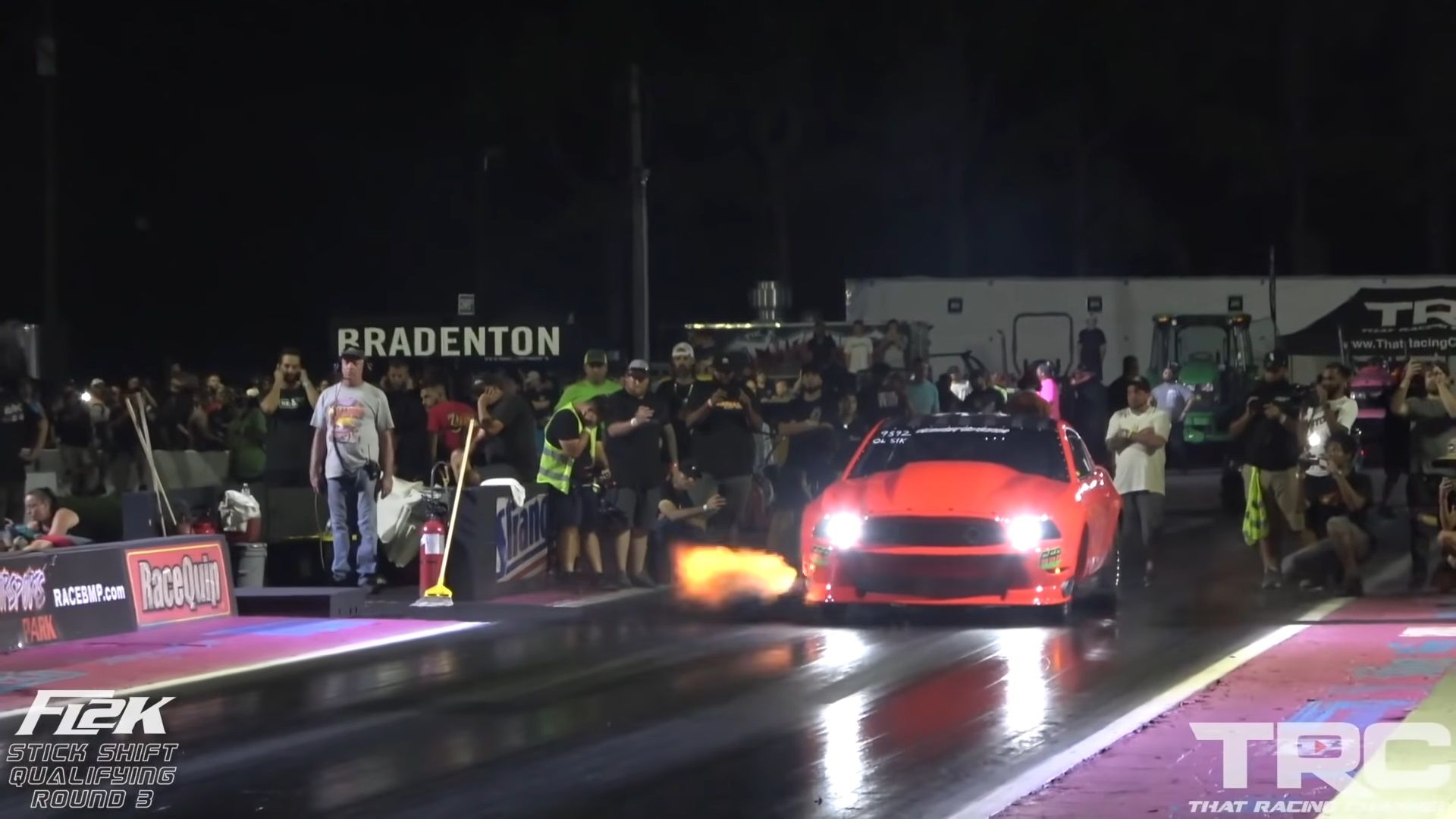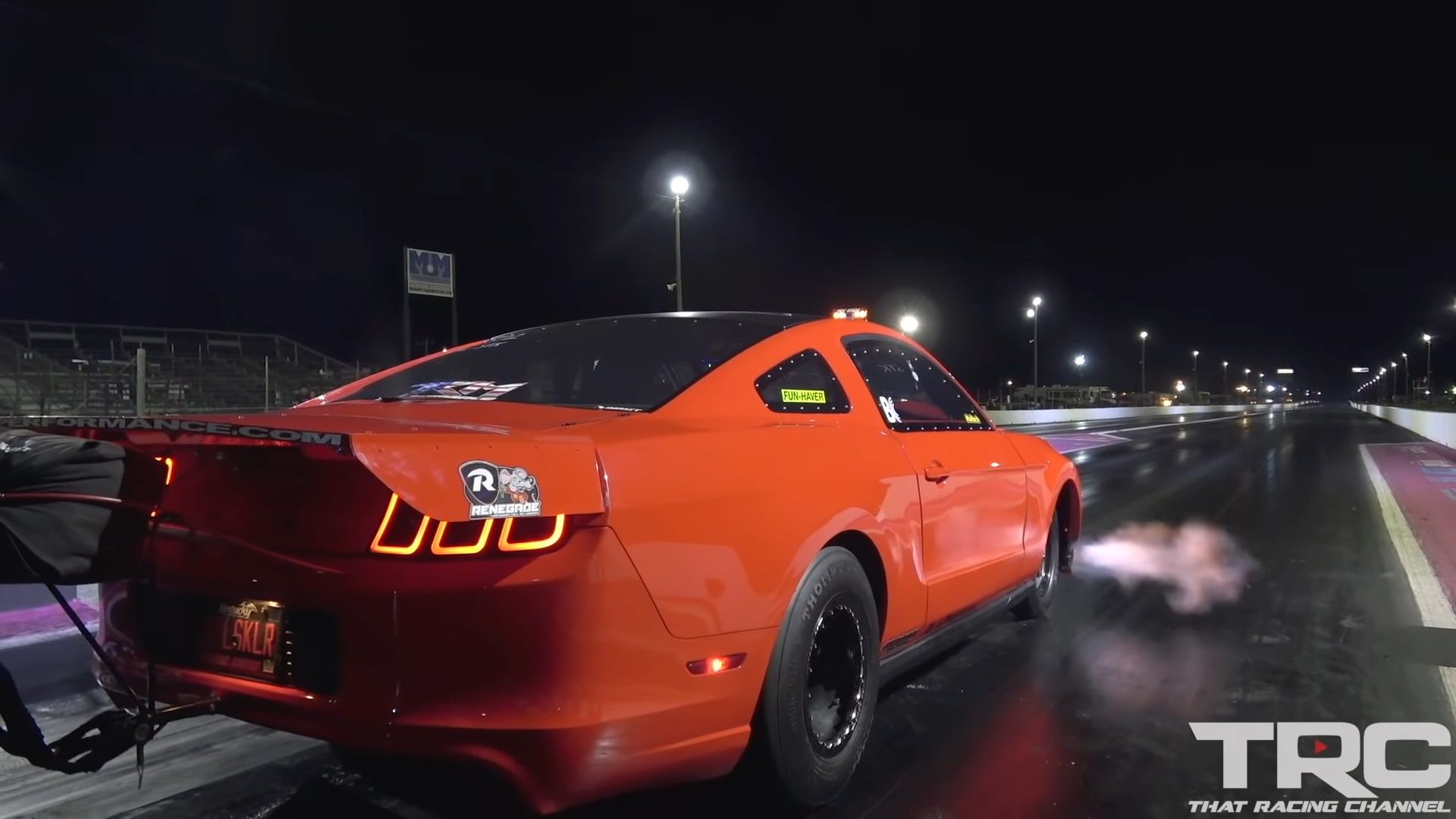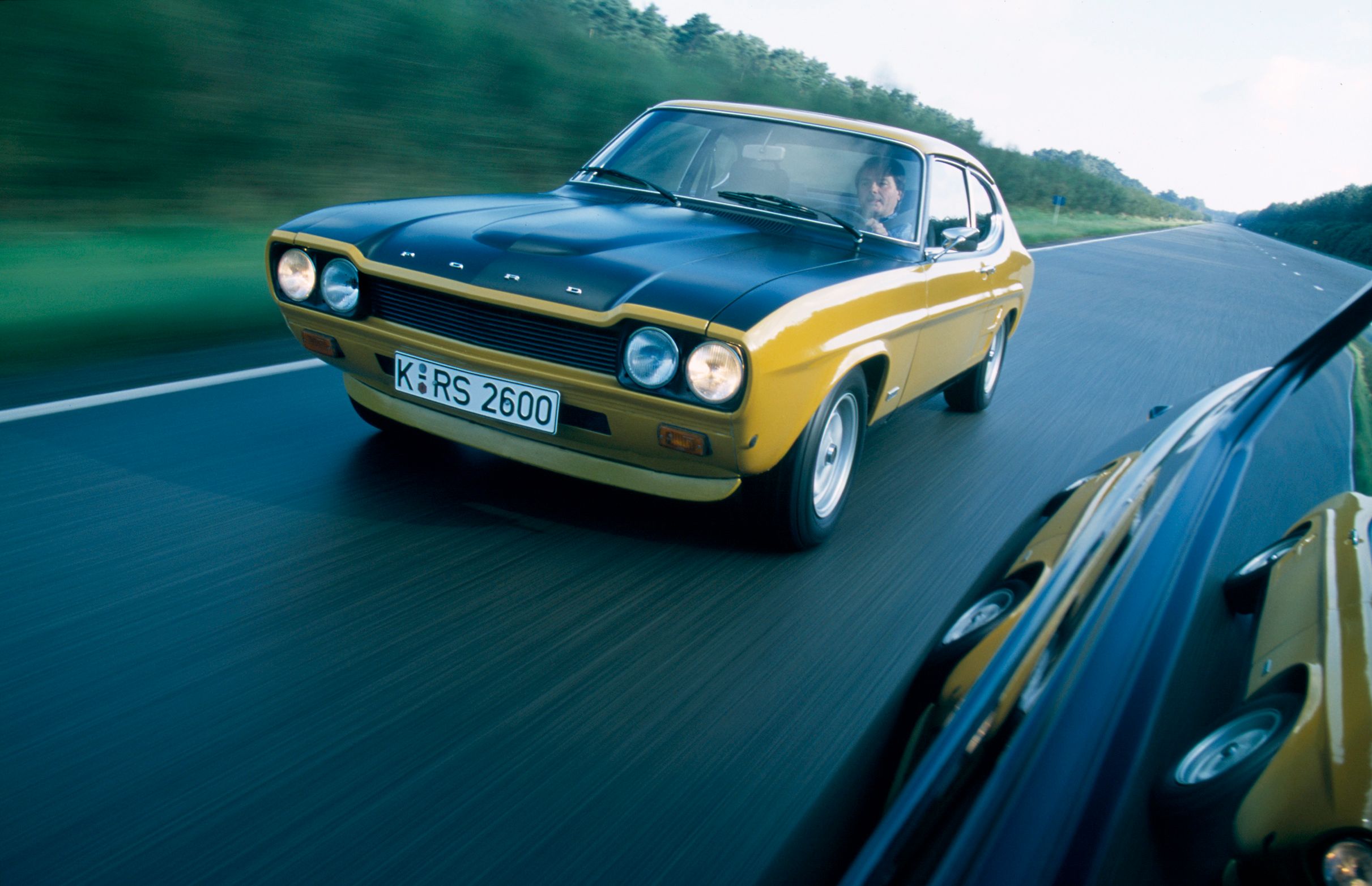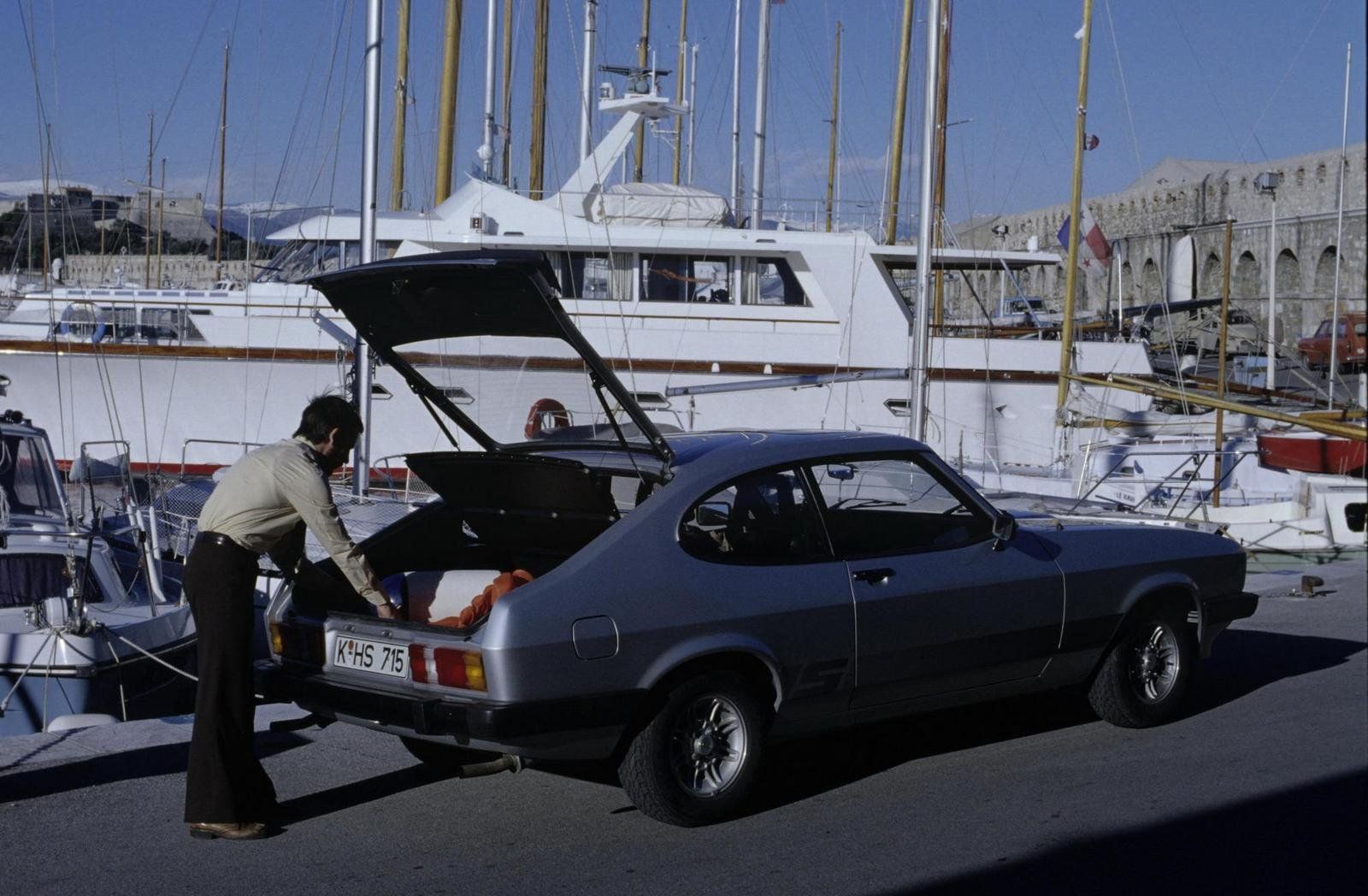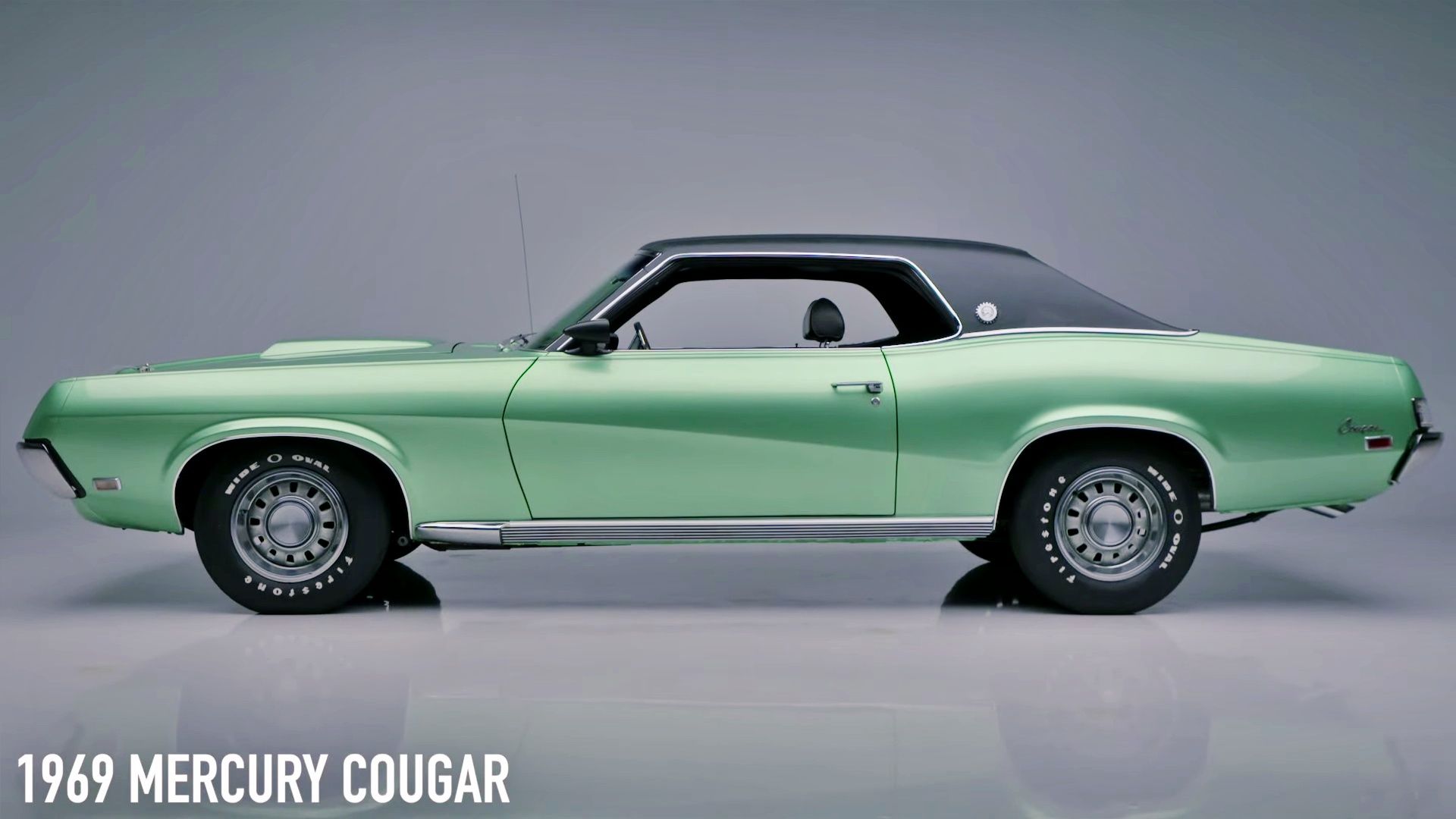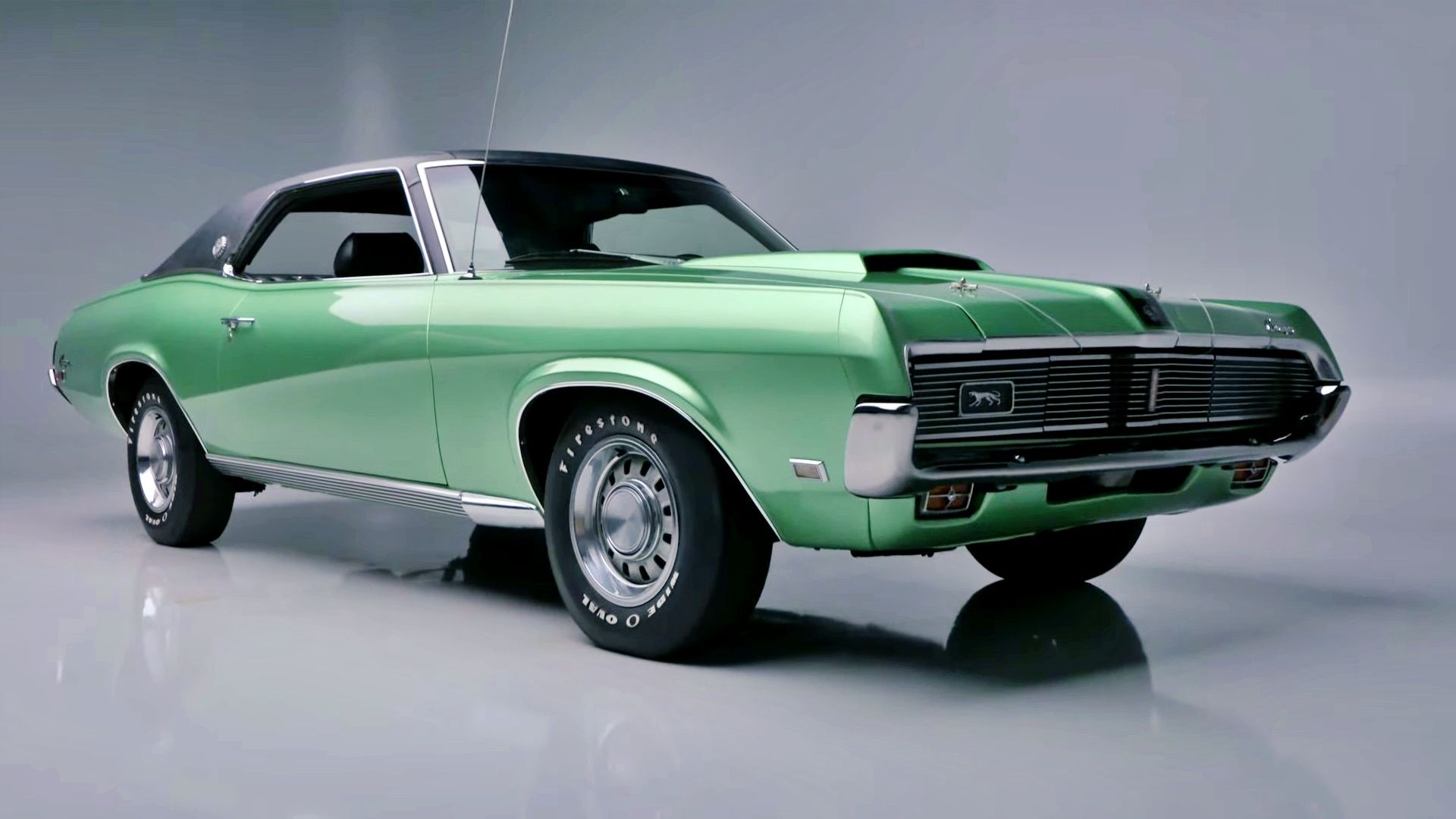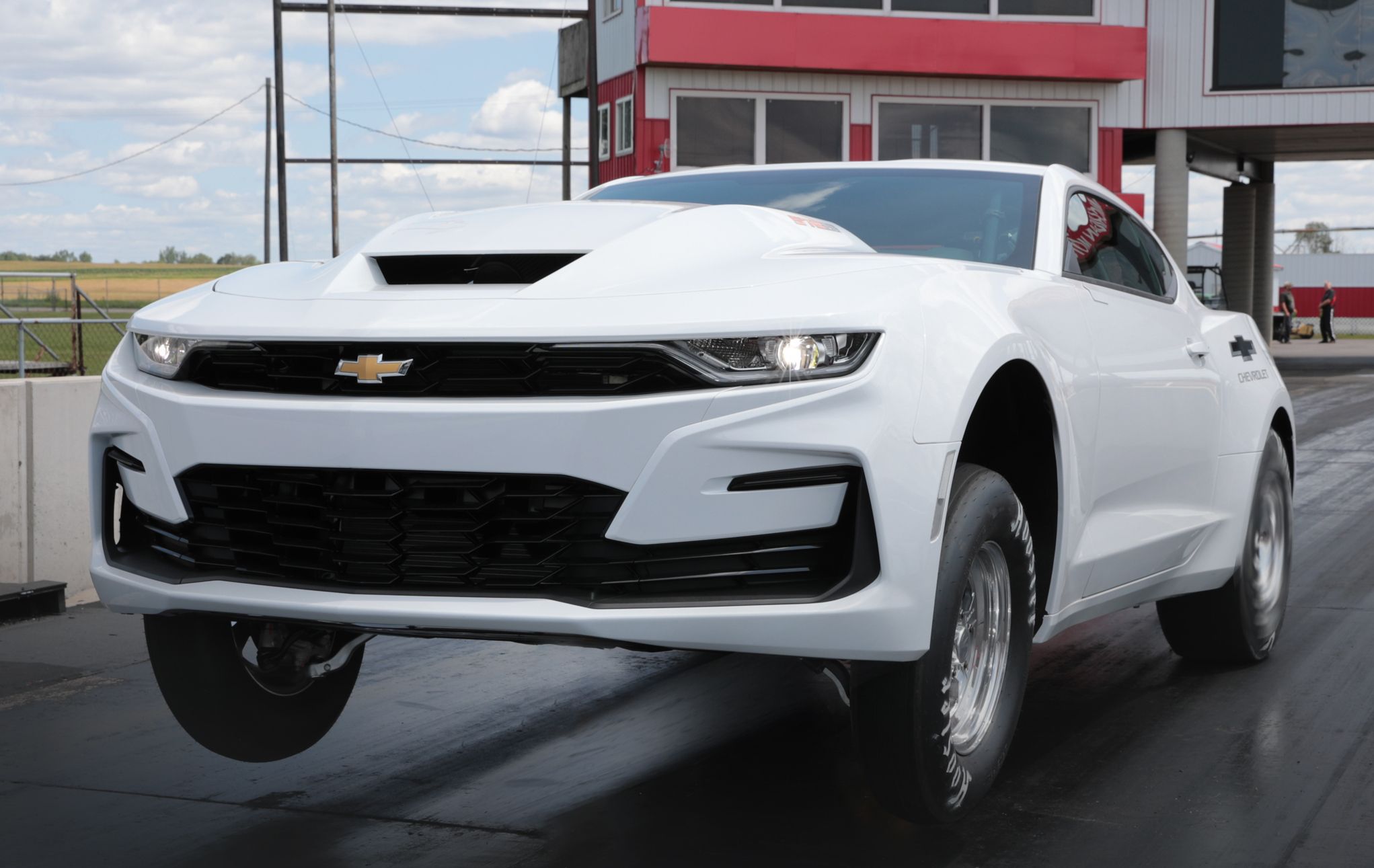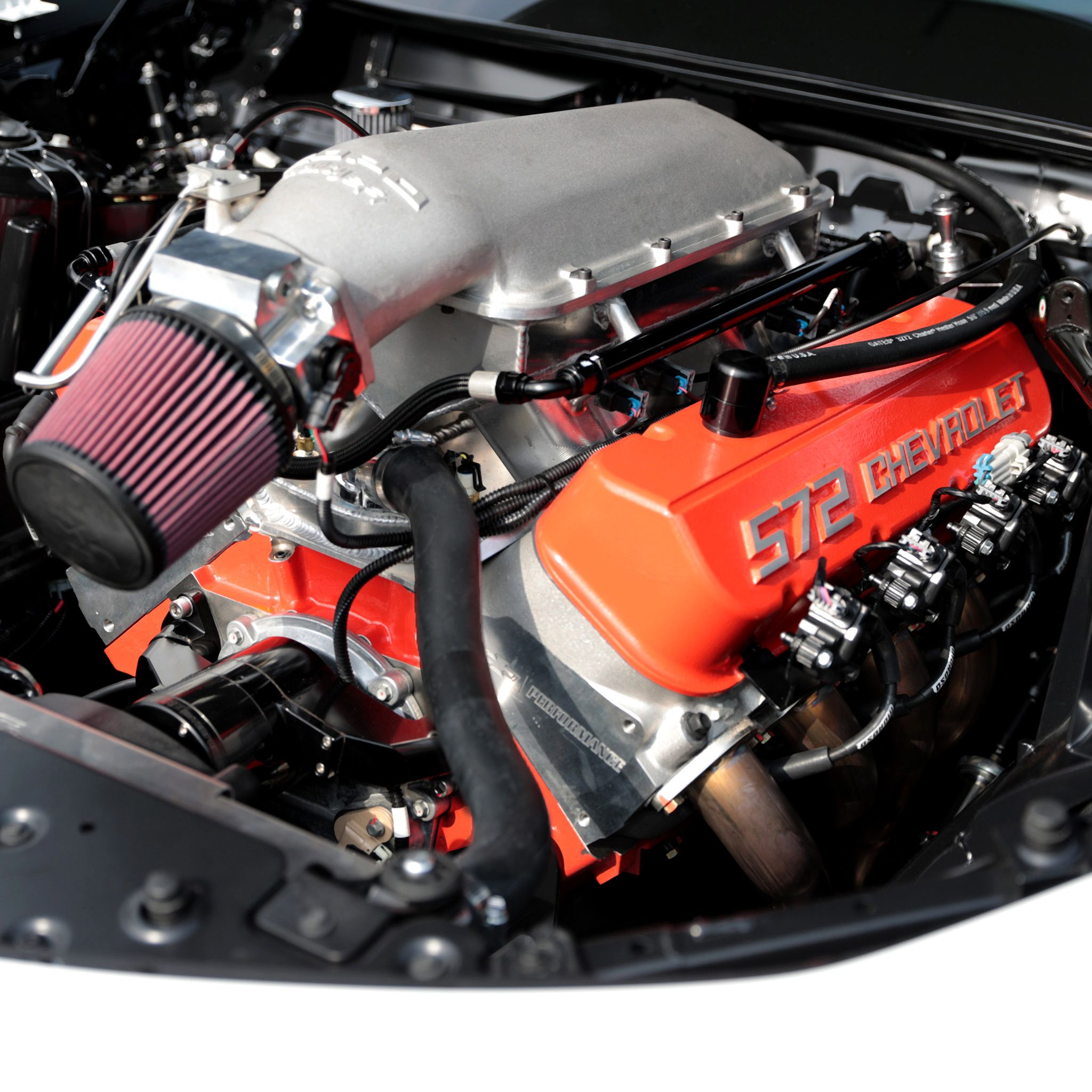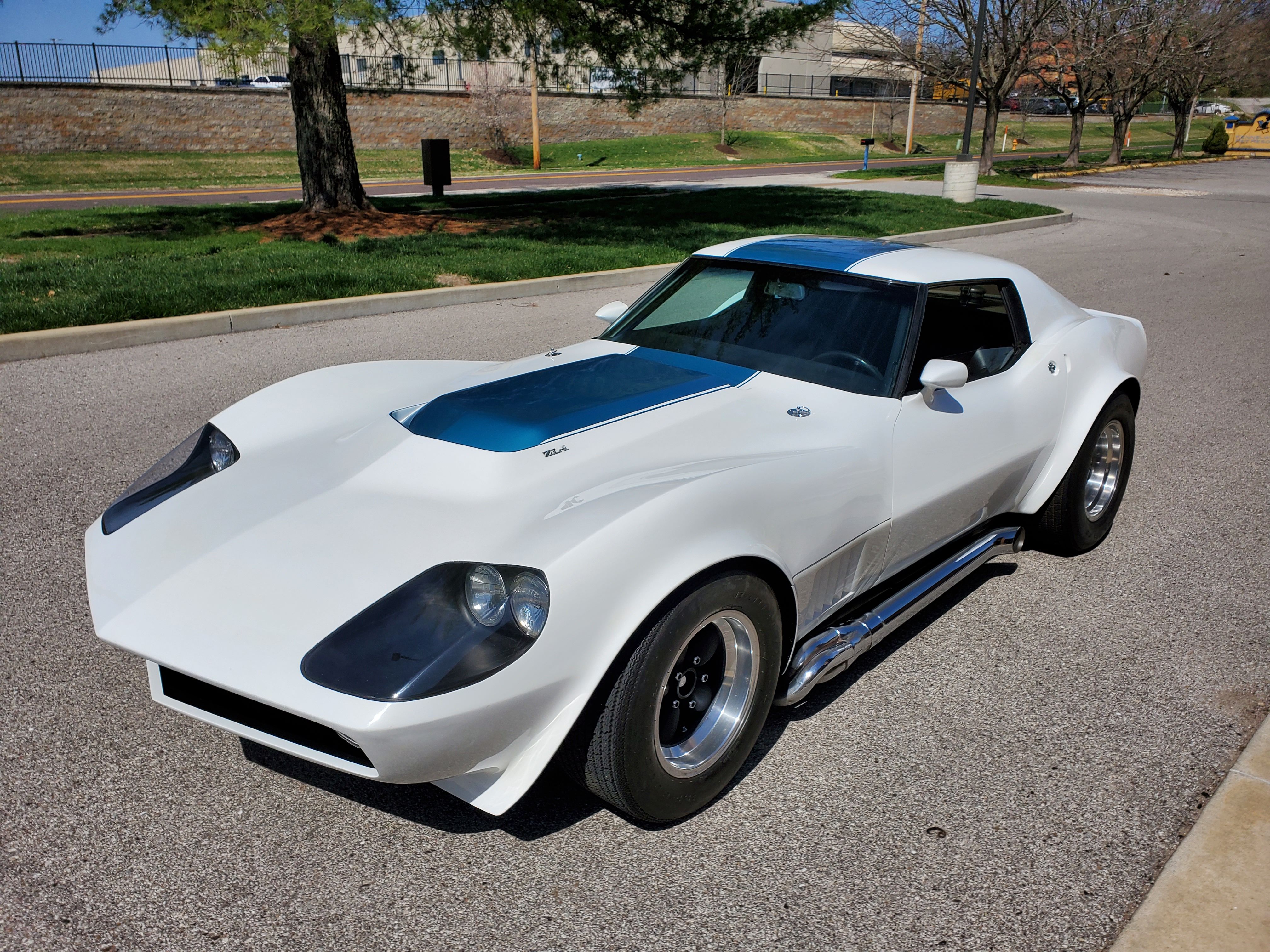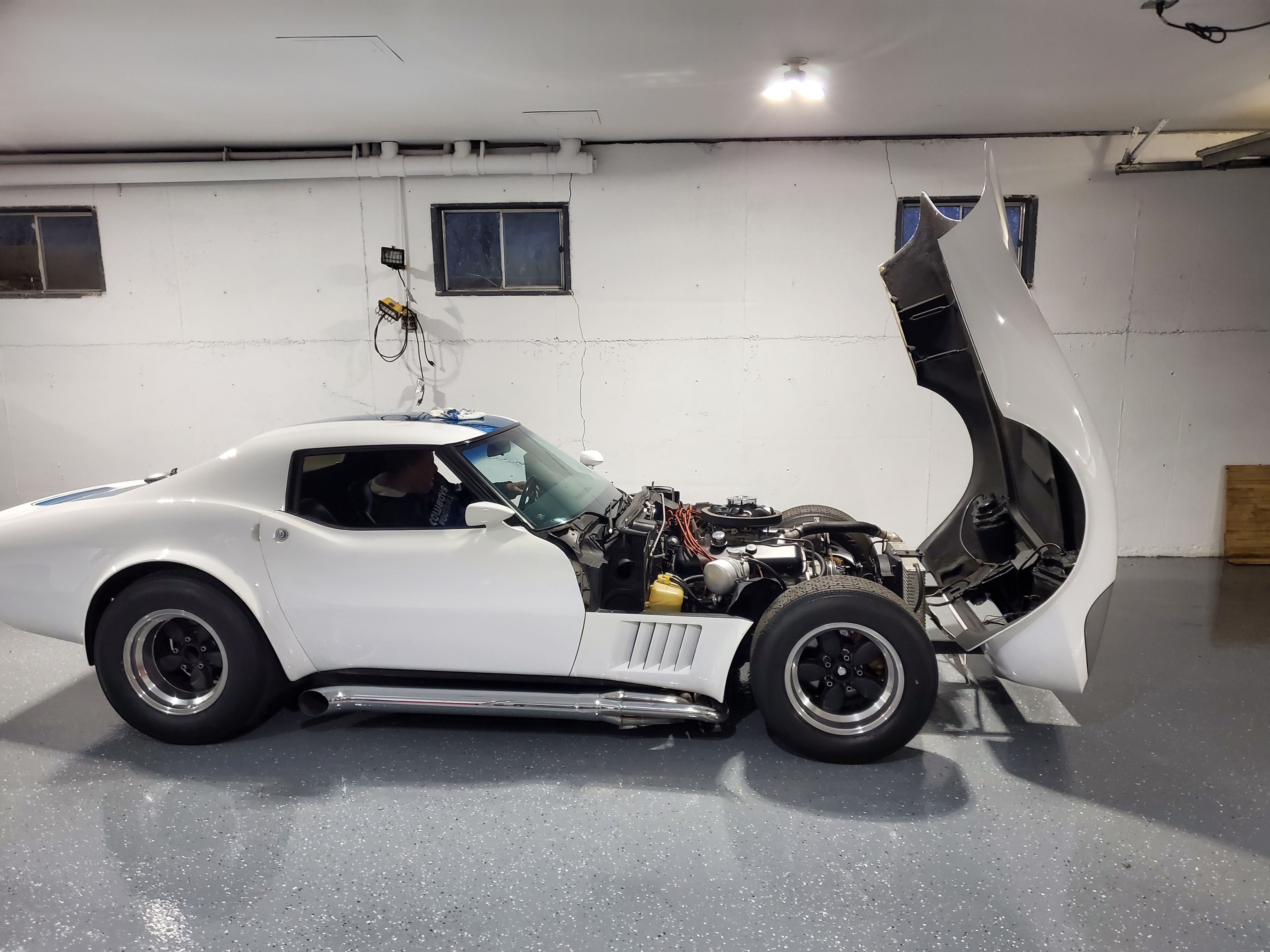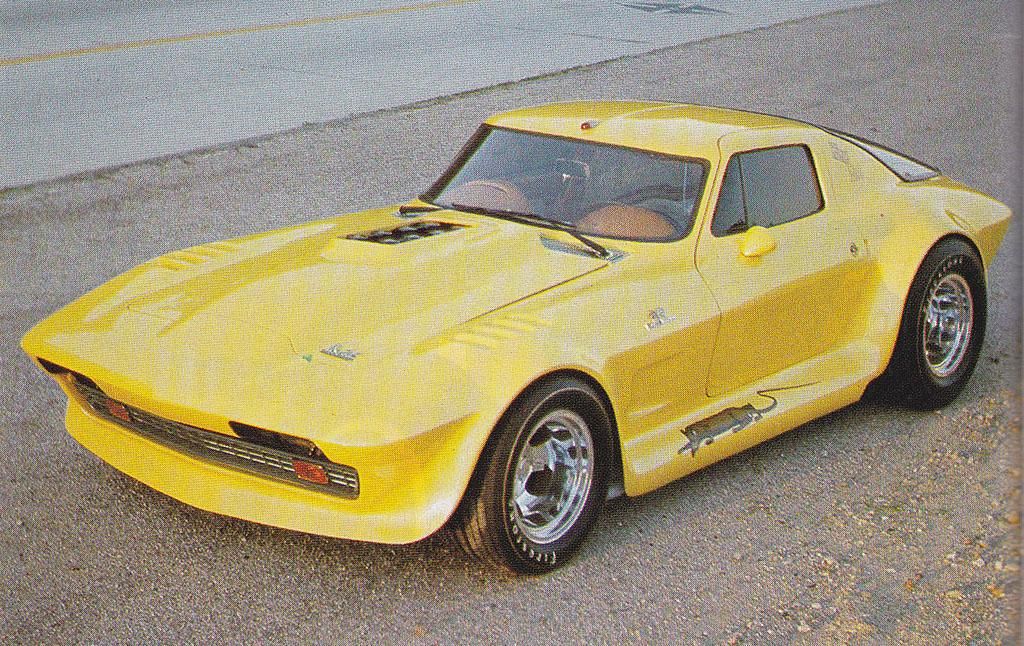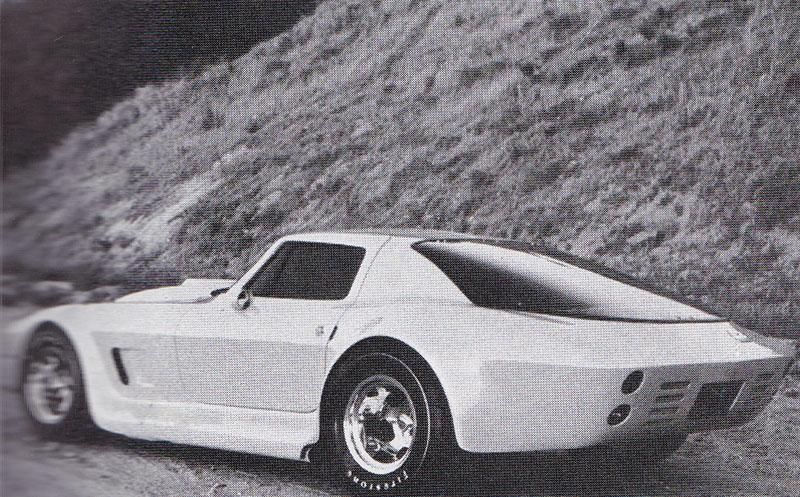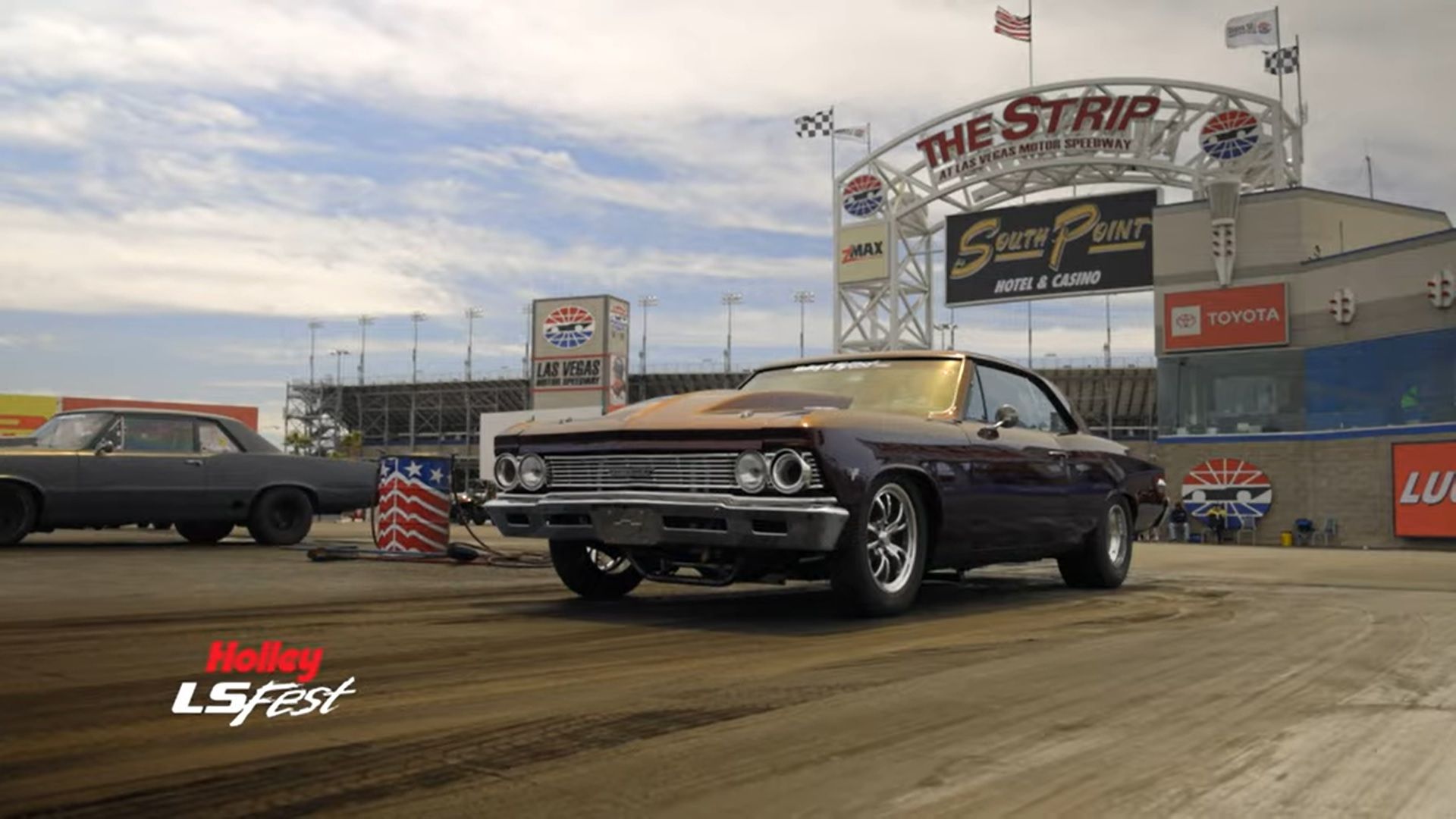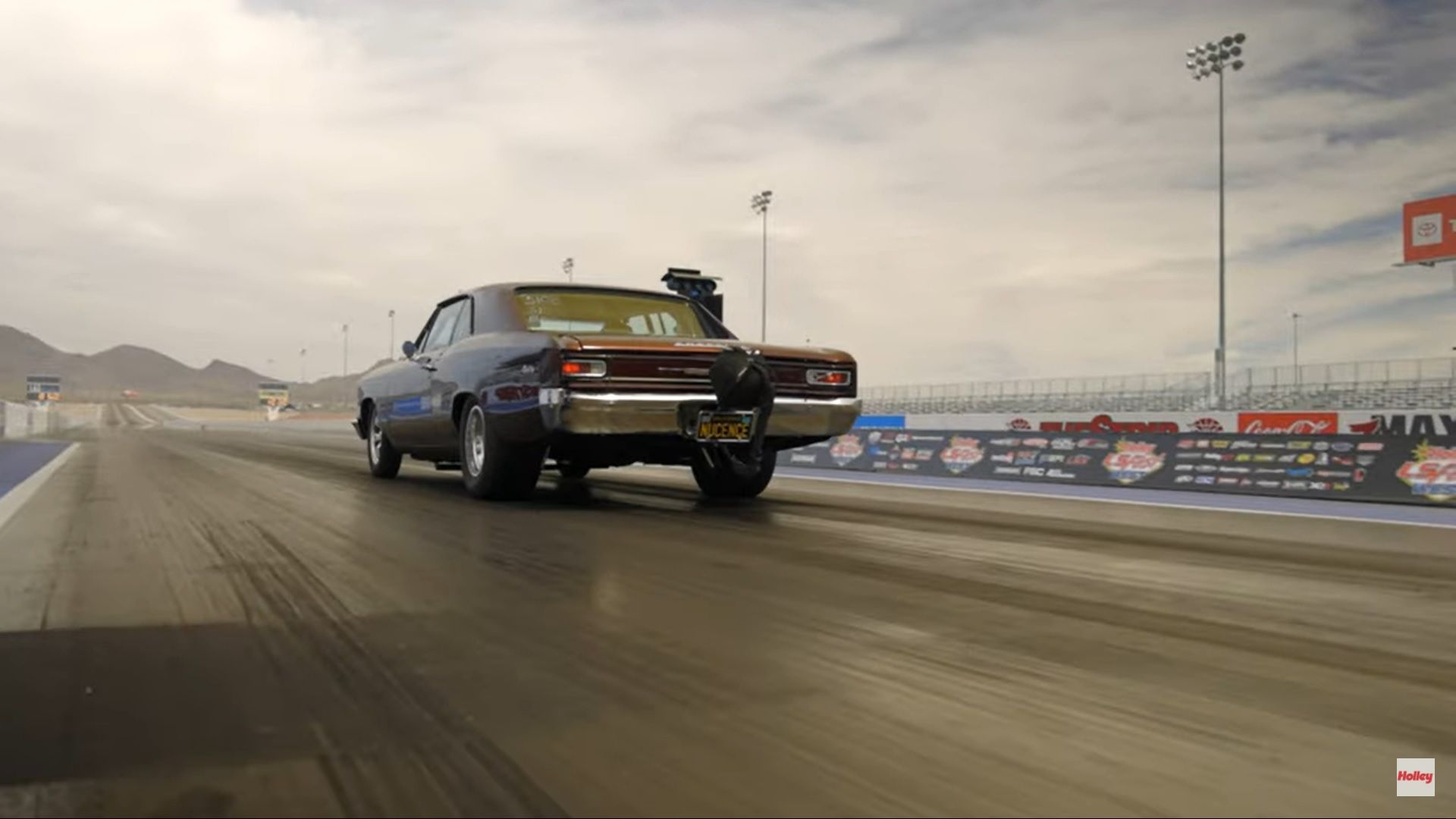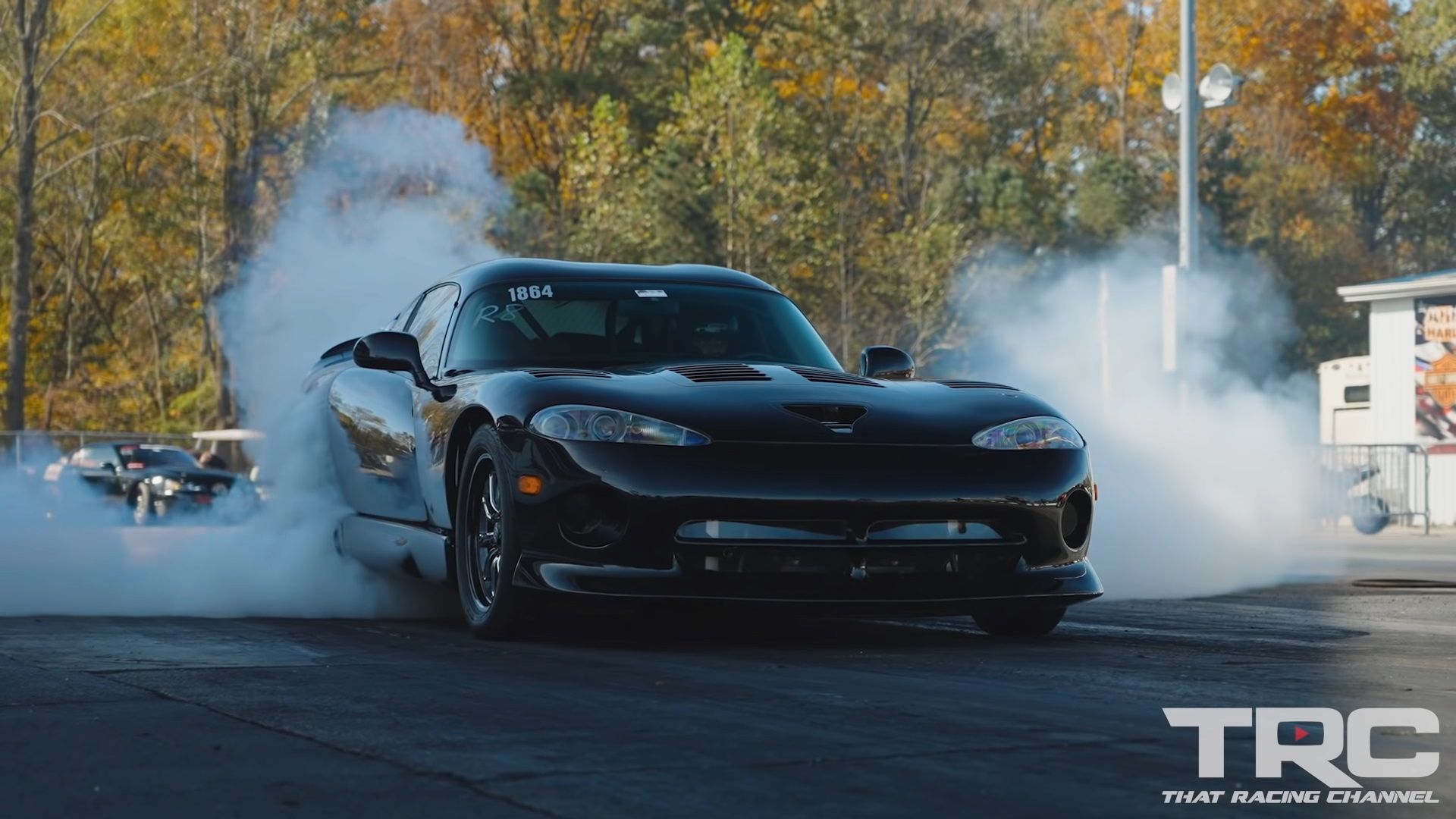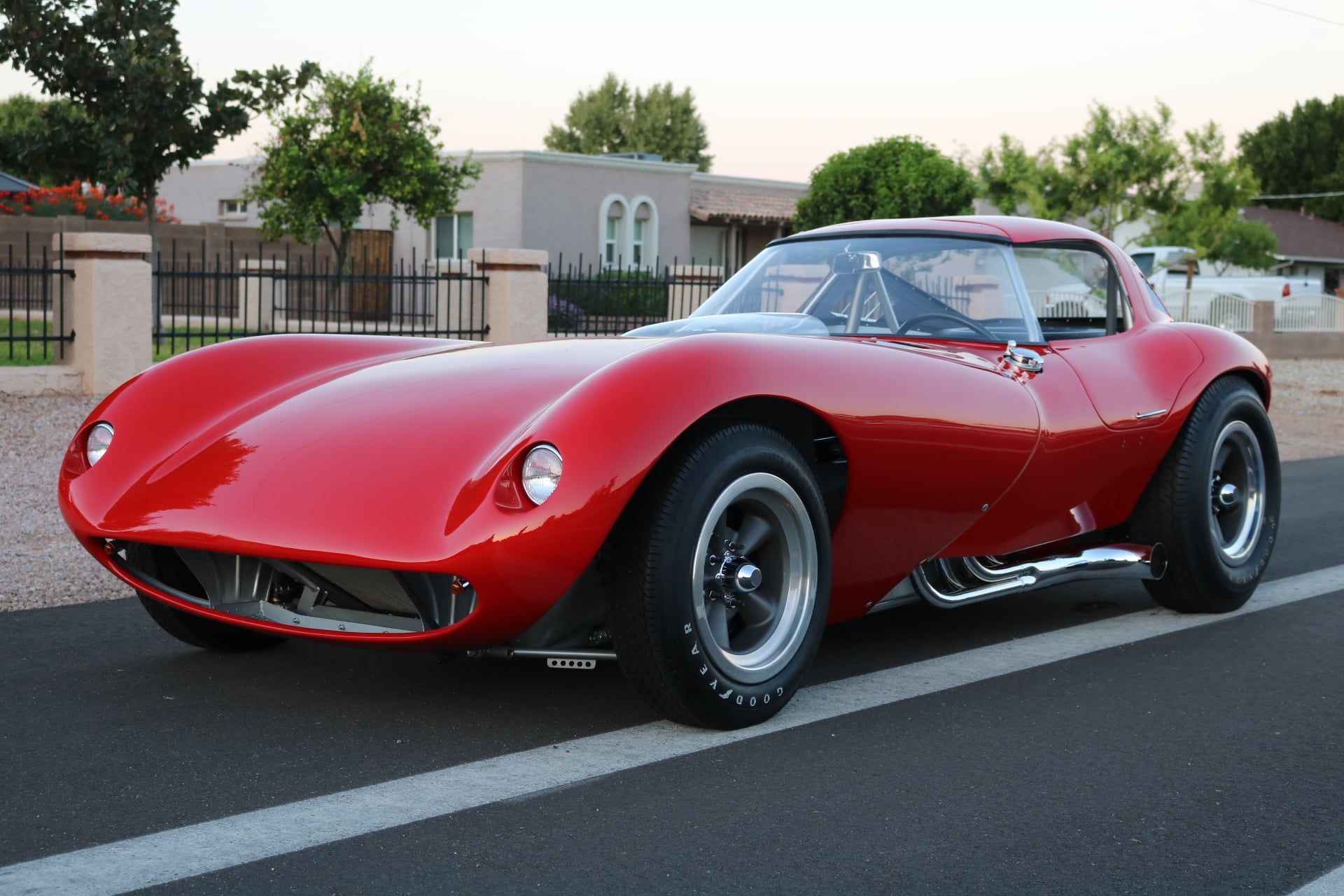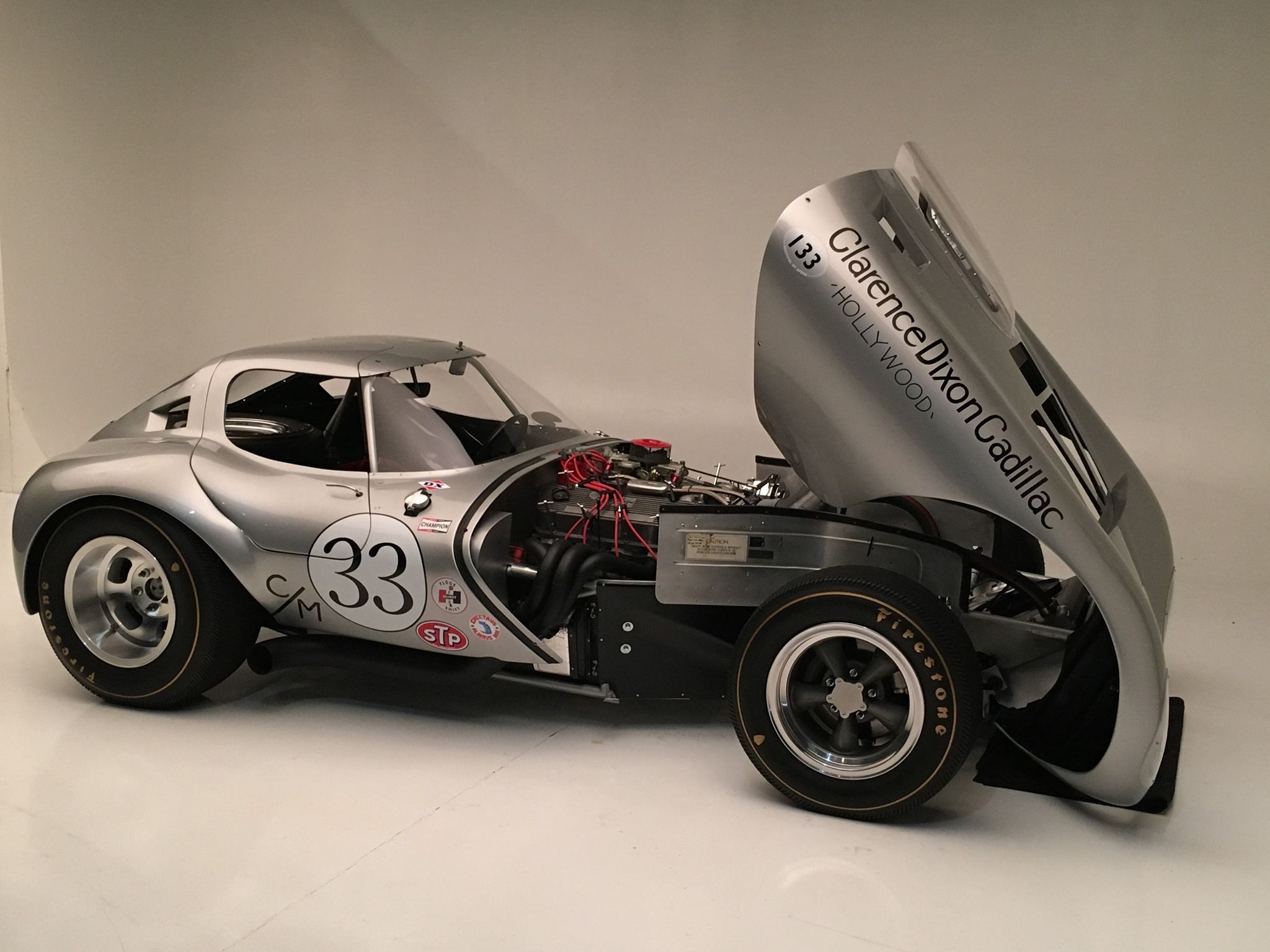Despite 2021 being a fairly challenging year for the entire auto industry as a whole, we still managed to see some fairly phenomenal cars throughout the year. The muscle car scene was no different. Our numbers tell us that these were some of the cars that you, i.e our readers enjoyed reading the most in 2021.
Here's a quick recap of these special cars which include classics, auction cars, high-performance drag racers, cars with engine swaps, and being 2021, an EV also made it to our list. So in no particular order, here they are.
Cobra Jet 1400 EV
With EV's making headway this year, let's kick things off with the Cobra Jet 1400 EV. Back in July, we told you about Bob Tasca III, who drove a one-of-a-kind Ford Mustang Cobra Jet 1400 to a quarter-mile time of 8.12 seconds at 171 mph at Summit Motorsports Park in Norwalk, Ohio, surpassing the previous record of 8.27 seconds set in its debut last October.
When you hear the number 1400, this all-electric Mustang Cobra may be confounding, because the car actually produces 1,500 horsepower to the rear wheels, rather than the 1,400 that the moniker suggests. According to Ford, this is equivalent to the combined power of three powerful 2021 Mustang GT V-8 engines.
The Cobra Jet is propelled by inverters connected to a pair of dual-stack Cascadia Motion motors that spin at up to 10,000 RPM. These motors, which run at 800 volts and up to 700 amps, have a maximum power output of 350kW per motor. These electric motors create 1,100 ft-lbs of torque and are coupled to a three-speed T400 transmission.
Quarter Mile World Record 1900 hp Stick Shift Mustang
From one Mustang to the next. Joel Steele, who smashed the ¼ mile stick shift world record, gave us a rundown on this Mustang’s specifications. The car started out as a 2012 Ford Mustang Boss, which Joel had previously street-raced. What began as a streetcar evolved into a full-fledged drag racer. The car's sole goal was to "Break the record."
The dry weight of "Constantine" is 2,750 pounds. Believe it or not, the engine has a fairly conservative setting. It has a generation one block and heads, as well as a twin-turbo system that produces roughly 30 pounds of boost.
Joel claims that the setup requires a lot of fine-tuning and that there is a "drop" of about 2,800 RPM that they need to work out. Nonetheless, after several seven-second passes in the ballpark of 200 mph, his Mustang finally cracked the high sixes, with a top quarter-mile time of 6.956 seconds at 202.00 mph.
Ford Capri - European Pony
Moving on to an old classic now, this Euro-spec Ford obviously piqued your interest this year. The Ford Mustang debuted in 1964 and quickly became a hit in the American market. Recognizing the potential, Ford's European arm desired its own Mustang. Enter the Ford Capri. The car was designed with cost-effectiveness in mind.
The Capri, like the Mustang, was designed to be a mass-produced coupe, therefore it was available with a wide range of engines. Unfortunately, most Capri models were not exceptionally speedy due to their low price.
The Capri was manufactured from 1968 through 1986. It went through three generations, each of which has a set of base and performance models. There were countless variations of the Capri rated for anywhere between 188 to 230 horsepower.
1 of 53 1969 Mercury Cougar
We also featured this 1 of 53 1969 Mercury Cougar XR7 Super Cobra that went under the hammer at Barrett Jackson Auctions earlier this year. Now, the Cougar was named Car of the Year by MotorTrends in 1967. It shared its underpinnings with the Ford Mustang, but the two vehicles have distinct wheelbases and sheet metal. The Cougar was Ford's response to a car that sat somewhere between the Mustang and the Thunderbird.
The engine in this 1969 Mercury Cougar is an R-code 428 ci V-8 Jet Big Block mated to a close-ratio four-speed manual transmission. It has the V-code feature as well as the 391 gear ratio traction lock. The model seen here is done in a gorgeous shade of medium emerald metallic paint, complementing the factory color 8A inside. In 1969, only 53 Super Cobra Jets were produced. The car was listed with no reserve at Barrett Jackson auctions back in August and it eventually sold for $165,000.
2022 Chevrolet COPO Camaro
In 2022, the Chevrolet COPO Camaro will return to the track with a new 572-cubic-inch, 9.4-liter engine. The Big Block V-8 is inspired by the original 1969 COPO Camaro, a drag racer that was created solely for dealers who used the Central Office Production Order, or COPO, to outfit cars with the most attainable engine power.
COPO drag racing cars are extremely rare when they leave the factory. Because there were more applicants, the production run was limited to 69 units per year, and the ability to purchase a COPO was determined by lottery. Since Chevy relaunched the COPO program in 2012, fewer than 700 COPO Camaro cars have been produced.
The 2022 Chevrolet COPO Camaro is powered by a magnificent 9.4 liter Big Block V-8 engine with a cast-iron block, aluminum cylinder heads, forged steel crankshaft, forged aluminum pistons, and connecting rods. It was homologated by the National Hot Rod Association (NHRA) with only 436 horsepower. It's also the COPO Camaro's least powerful engine option. With such a large working volume, torque will be an important factor.
1968 Chevrolet Corvette Reimagined
Richard Smith, a GM mechanic, went to tremendous lengths to create his ideal 1968 Chevrolet Corvette. We are of course talking about the “Beast”. What makes this car even more unique is that it was one of the earliest customized Corvettes. Richard decided to order his C3 back in the summer of 1967, and it arrived in February 1968.
Richard's lightweight project began in November that year. The car was inspired by many GM experimental Corvettes, which is why it incorporates elements from various concept cars such as the Mako Shark II, 1959 Corvette Stingray Racer, 1957 Corvette SS, and Manta Ray.
The interior, like the exterior of this classic Vette, was simplified and updated in almost every way. The ZL-1 engine, which can be found in many Corvette concepts, piqued Richard's interest. While no official figures have been released, it is believed that the engine produces around 650 horsepower.
Corvette King Rat
We move on to yet another Corvette, the King Rat which was built around a 1966 Chevrolet Corvette Stingray convertible powered by a 327 small-block V-8. Bruno's Custom Corvette Shop in Studio City, California, built it. The bespoke body, like the original C3 Corvette, was thought to be made of fiber-glass. It was wider than standard, with flared fenders that were elegantly blended together with the new rocker panels.
The Corvette King Rat appeared on the cover of a 1976 car magazine, therefore the conversion was thought to have taken place in the 1970s. Keith Bell's proposal was to develop a 180 mph road-going missile that can also be transported to the track, and the car reportedly went as fast as it appeared.
The original 327 V-8 was not present in the 1966 Corvette that served as the basis for the King Rat. Instead, it was powered by a 454 V-8 from a 1970 Chevrolet, which produced roughly 460 horsepower. According to sources, the vehicle is in good condition and will be restored soon.
LS Powered 1966 Chevelle
The Chevelle was one of Chevrolet's best-selling automobiles and also one of the finest cars of all time. It still remains a model that is sought after by collectors and hot rodders to this day. We featured Griffin Steinfeld's LS Powered 1966 Chevelle SS back in July. This magnificent-looking equipment has been passed down through two generations of his family for the past 16 years. It was in fact a Christmas present from his mother to his father. Griffin says that he is extremely fortunate to have the opportunity to share this vehicle with his dad.
The LS conversion on this specific car started when Steinfeld lost a valve on the old school small block, ruining the engine. This Chevelle retains its original 1966 chassis, which is kept under control by a Holley Dominator EFI system, which also regulates the 4L80-E automatic transmission. The twin-turbo LS-powered V-8 engine under the hood delivers some explosive performance. It has the ability to spit flames via its hood exhaust.
According to Steinfeld, the fastest quarter-mile run on this Chevelle so far was 8.46 seconds at 171 mph. This one-of-a-kind Chevelle is a lot of fun on the drag strip, and we were glad to see that the excitement is shared by both father and son. This outstanding and rare Chevelle has to be amongst the fastest and most desired Chevelle SSs out there.
3200 HP Viper GTS
Okay, this one isn't a pony car per se, but the story of the "six-second kid" and his 3,200-horsepower 1999 Dodge Viper GTS is too good to leave out. Milan – the young driver, was in charge of taming the vicious snake and continues in his father’s footsteps This black Viper is more than just a toy for the father-son duo. It's a family relic with a narrative to tell, and the story appears to be just getting started.
The 542-cubic-inch 8.9-liter V-10 engine has been fully built, with special camshafts, diamond pistons, Carillo connecting rods, Striker heads, and much more. Most importantly, it is equipped with two 88mm Garett turbochargers capable of producing over 40 psi of boost. The monster V-10 is coupled to a Bad Habit Racing-built two-speed PowerGlide transmission.
Milan, now 18 years old, set a quarter-mile mark of 6.95 seconds at 202.67 mph while his father took the Viper up to 244 mph on the half-mile. Milan says that they will continue to work on their Viper so that it can run even faster.
The Forgotten Cobra Rival; Cheetah
Last, but certainly not least, let's talk about Bill Thomas' Cheetah, a story that we covered only recently. William P. "Bill" Thomas was a well-known Chevy employee back in the day. Over the years, the sports car designer and engineer have collaborated with Chevrolet. They called Bill Thomas when Shelby Cobra was winning races. In 1963, he invented the Cheetah.
The "Cobra killer" had an unusual design, with a really long front end. The hood was roughly half the length of the vehicle, while the back end was unusually short, resulting in a very tight cockpit with no thermal insulation. It featured a front-mid-engine, rear-wheel-drive configuration, and the V-8 was so far back that the footwells were described as aluminum ovens.
The Cheetah was believed to be powered by a variety of Chevy engines, depending on the trim level. The 327 cu in Small-Block V-8 from the C2 Corvette was the most notable. At some point, calamity struck Bill Thomas' workshop, causing significant damage to the structure, and the Cheetah project was canceled as a result. It is estimated that between 15 and 25 automobiles were produced at the plant and the last example left the factory in 1966.
So that rounds up our list of the most popular muscle cars that featured on our site this year. Let us know what you thought.

